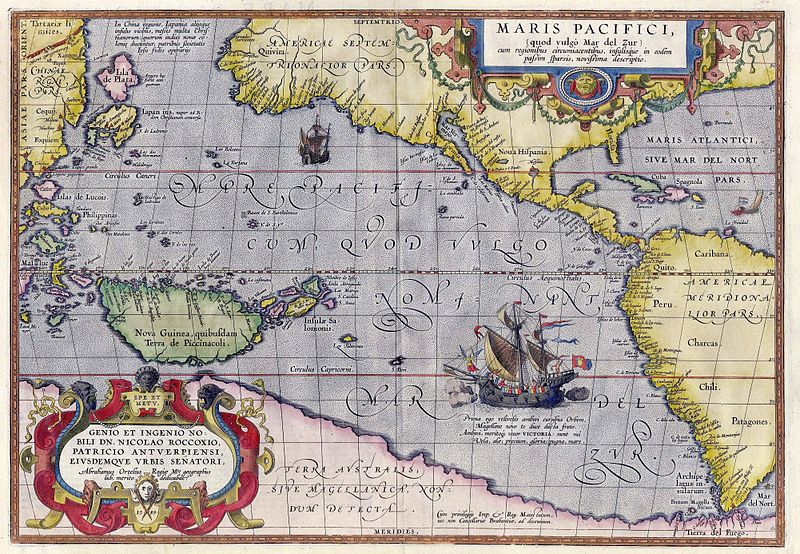
So last entry I was a bit brief on what Stuart and I are actually doing. I’ll try and explain in further detail below. But, I am excited to say we have actually collected some good samples and are scheduled to pump again tonight starting at 1AM!
Stuart and I are collecting filters of seawater at various depths in the ocean. The filtering units consist of a steel frame, a battery unit (black cylinder), a vacuum pump, a filter stand (smaller black cylinder), and a flow meter. So the water is slowly sucked through the filter stand, then through the flow meter and then back out to the open ocean. We trap the particles, bacteria, and archaea on our filter. The filter stand has a mesh grill to catch any larger animals or objects that get sucked in, followed by a 53 micrometers filter to catch small animals, and then a 0.7 micrometer glass fiber filter that we collect for our sample. The glass filters have been heated to 450 °C to burn any organic material off them so that they are completely clean when we put them in the filter stand. Therefore we know our results our just from the ocean.
The CTD is a machine lowered on a steel cable that has twenty-four 10 L bottles attached that can collect water at specific depths in the water column. It has sensors attached that can measure the salinity, O2 concentration, and depth. We use the cable for the CTD and it’s depth meter to lower our filtering pumps to the layers of water we want to collect. This is a tricky process. The CTD gets lowered into the water and then we have to coordinate with the crane operator to lower the cable a certain distance and then we lean over the side of the boat (with safety lines tied to our life vests) and attach the 100 lb. filter pump onto the cable. It is a little scary when the weather is bad and the waves are high.
So far, we have collected 9 depths from station 2 and 4 depths from station 1. We are scheduled to pump again the next two days so we should end up with 12 depths from station 1. The filters are stored in the -80 C freezer. We will transport the lipids back to our lab frozen and then extract the filters for bacterial and archaeal lipids.
We are interested in the particles in the ocean because the particles sink to the bottom and form mud, the mud becomes sediment, and the sediment over geologic time becomes sedimentary rock. We study the particles to see what will eventually be compressed into the sedimentary rock. If we can understand this process in the modern times we can get useful information about paleoclimate and paleoecology from the sedimentary rocks of the past.
Stuart and I are collecting filters of seawater at various depths in the ocean. The filtering units consist of a steel frame, a battery unit (black cylinder), a vacuum pump, a filter stand (smaller black cylinder), and a flow meter. So the water is slowly sucked through the filter stand, then through the flow meter and then back out to the open ocean. We trap the particles, bacteria, and archaea on our filter. The filter stand has a mesh grill to catch any larger animals or objects that get sucked in, followed by a 53 micrometers filter to catch small animals, and then a 0.7 micrometer glass fiber filter that we collect for our sample. The glass filters have been heated to 450 °C to burn any organic material off them so that they are completely clean when we put them in the filter stand. Therefore we know our results our just from the ocean.
The CTD is a machine lowered on a steel cable that has twenty-four 10 L bottles attached that can collect water at specific depths in the water column. It has sensors attached that can measure the salinity, O2 concentration, and depth. We use the cable for the CTD and it’s depth meter to lower our filtering pumps to the layers of water we want to collect. This is a tricky process. The CTD gets lowered into the water and then we have to coordinate with the crane operator to lower the cable a certain distance and then we lean over the side of the boat (with safety lines tied to our life vests) and attach the 100 lb. filter pump onto the cable. It is a little scary when the weather is bad and the waves are high.
So far, we have collected 9 depths from station 2 and 4 depths from station 1. We are scheduled to pump again the next two days so we should end up with 12 depths from station 1. The filters are stored in the -80 C freezer. We will transport the lipids back to our lab frozen and then extract the filters for bacterial and archaeal lipids.
We are interested in the particles in the ocean because the particles sink to the bottom and form mud, the mud becomes sediment, and the sediment over geologic time becomes sedimentary rock. We study the particles to see what will eventually be compressed into the sedimentary rock. If we can understand this process in the modern times we can get useful information about paleoclimate and paleoecology from the sedimentary rocks of the past.



3 comments:
It all makes so much more sense now. Thanks for the explanation. I've watched 'Deadliest Catch' and it looks dangerous, so don't get thrown overboard! Oh, and can we get some shots of scientists in action?
Yes and thanks for the suggestion. Stay tuned...
Keep up the good work Heidi!
I hope the seas are calm and the organic matter rich.
Best,
Kate
Post a Comment